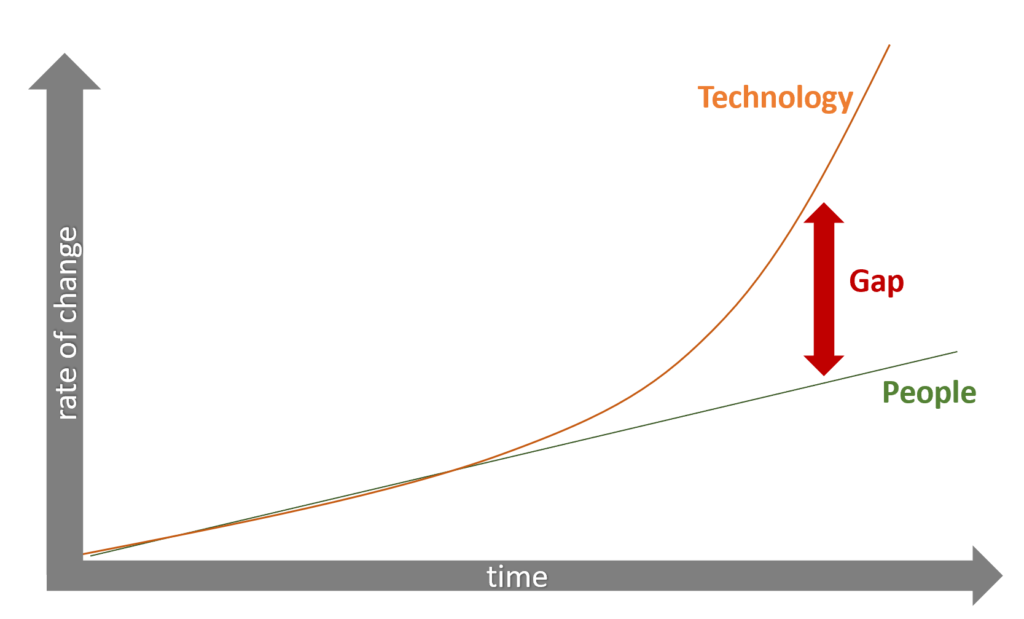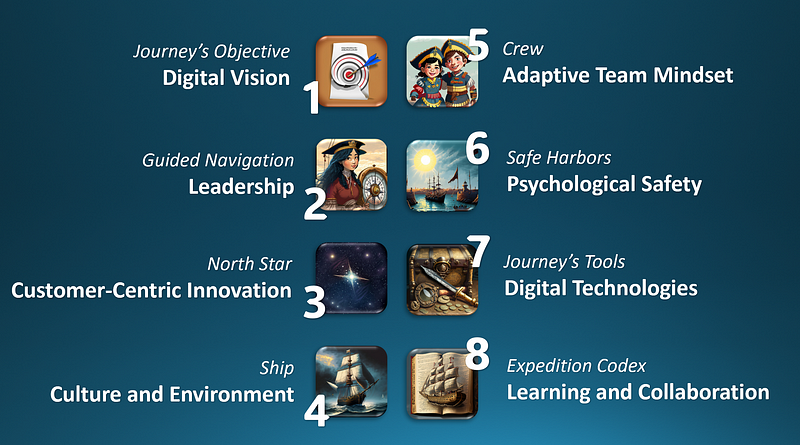If you place a frog in boiling water, it will immediately jump out to save itself. However, if you place the frog in cool water and gradually heat it, it will not perceive the danger until it is too late and will be boiled alive.

Why is Digital Transformation Important for Every Organization?
Digital transformation is more than just a buzzword; it’s a necessary evolution for businesses wanting to thrive in today’s fast-paced digital world to:
- Competitive Advantage: Embracing digital transformation allows businesses to stay competitive in the fast-paced tech world. This is important as it introduces new growth possibilities and helps develop new business models.
- Enhanced Efficiency and Productivity: Digital transformation optimizes workflows, automates manual tasks, and improves operational efficiency.
- Improved Customer Experience: Digital transformation enables organizations to enhance customer experiences by providing personalized, seamless, and convenient interactions across various touchpoints. It allows for better customer engagement, faster response times, and tailored offerings, ultimately increasing customer satisfaction and loyalty.
Closing the Gap: Empowering People to Harness Technology
In today’s fast-paced digital world, new technologies are emerging at a speed that outpaces the ability of traditional companies to learn and adapt to them. This rapid technological evolution creates a significant gap.
This gap is not just about the use of technology but also about understanding and integrating these technologies into business operations. Traditional companies often have established ways of doing things and may find it challenging to change their processes and systems quickly. They may also lack the necessary skills and knowledge to use new technologies effectively.
The rapid pace of technological change and the slower pace of learning and adaptation in traditional companies can lead to missed opportunities. It can hinder these companies from fully leveraging the benefits of new technologies, such as improved efficiency, enhanced customer experience, and new business models.

Companies must keep up with new technologies and foster a culture of continuous learning and adaptation. This can help them close the gap and ensure they are leveraging the full potential of digital transformation.
Organizations that neglect digital transformation are like frogs in slowly boiling water. They fail to adapt and gradually become outdated. By the time they realize it, it’s too late to catch up.

Top 8 Pillars for a Succesful Digital Transformation Journey
The following section covers the primary pillars of a successful digital journey. Accompanying each pillar, you’ll find related posts to help deepen your understanding. As I continue to explore these themes and create new content, I will keep this section updated for a richer learning experience.
Let’s set sail on this digital transformation voyage together.

The Pillars
1 Journey’s Objective (Digital Vision): On a trip, knowing your destination keeps you from wandering, much like a clear goal keeps a digital transformation focused.
2 Guided Navigation (Leadership): In a trip, a compass guides the way, similar to how leaders steer a company with the required strategy toward its digital transformation purpose.
3 North Star (Customer-Centric Innovation): On a journey, the North Star helps guide the way, just like focusing on customer needs guides innovation in digital transformation. The goal is not to rush ahead by ourselves but to listen to our customers and let them guide our actions in the digital world.
4 Ship (Ambidextrous Culture and Environment): Just as a ship navigates known and unknown waters, an organization must balance exploring new digital avenues with optimizing current ones. An ambidextrous culture and processes that allow exploration and exploitation ensure keeping existing businesses running and innovation. This helps businesses capitalize on opportunities and maximize strengths in the digital age.
5. Crew (Adaptive Team Mindset): Just like a ship’s crew must adapt to the changing seas during a voyage, a company’s team must be resilient and ready to change to achieve digital transformation. The journey isn’t about having the strongest crew but a team that can adapt and steer the ship through the changing digital waters.
6. Safe Harbors (Psychological Safety): A ship needs a safe harbor during storms; similarly, teams in companies need psychological safety and trust. This ensures open communication and collaboration beyond boundaries.
7. Journey’s Tools (Digital Technologies): On a voyage, having the right tools makes the journey possible, much like having the right digital technologies makes digital transformation achievable. The journey isn’t about the most advanced tools but about using the right tools effectively to navigate the digital sea.
8. Expedition’s Codex (Learning and Collaboration): Just like an expedition’s codex guides a crew through uncharted waters, continuous learning, collaboration, and a willingness to experiment guide an organization through its digital transformation journey. The journey isn’t about knowing all from the start but learning, collaborating, and experimenting to sail smoothly through the digital waves.
Additional Important Elements
Our digital transformation journey, guided by eight critical pillars, also encompasses additional important elements to ensure a comprehensive voyage:
- Weather Monitoring (Data Analytics): Harnessing data and analytics for informed adaptations.
- Journey Partners (Partners): Forging alliances for enriched digital capabilities and ecosystems.
- Battling Pirates (Cybersecurity): Strengthening defenses against threats.
- Sustainability and Ethics: Prioritizing ethical and sustainable practices in digital transformation.
With my next articles, we will learn why these pillars are important for digital transformation and how to use them in your organization.
Conclusion
Digital transformation isn’t just about adopting the latest tools. It’s about aligning these with your company’s mission and goals. Find this balance, and you’ve prepared yourself for a journey into the adventure of successful digital transformation.
Embarking on the digital transformation journey is about reshaping how your organization operates, communicates, and provides customer value.
Is your organization ready for the journey ahead, or is it like a frog slowly being heated in water?





